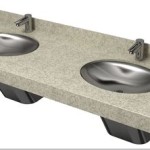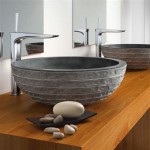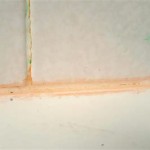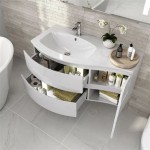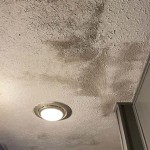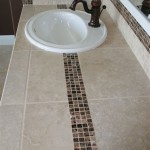Can You Refinish A Bathroom Vanity Top?
Bathroom vanity tops, subjected daily to water, toothpaste, hairspray, and general use, can show their age and wear over time. Rather than replacing the entire vanity, many homeowners consider refinishing the existing top. The feasibility and process, however, depend heavily on the material of the vanity top. While some materials are readily refinishable, others are not, or the process may be more complex and cost-prohibitive than replacement.
This article will explore the various types of bathroom vanity top materials, assess the possibilities and limitations of refinishing each, and provide general guidelines for the refinishing process when applicable. Understanding the specific material is crucial before commencing any refinishing project. Incorrectly attempting to refinish a non-refinishable surface can lead to irreversible damage and a more costly replacement.
Identifying Your Vanity Top Material
The first step in determining whether a vanity top can be refinished is to identify its material. Common materials include laminate, solid surface, cultured marble, tile, wood, and natural stone. Each material has distinct properties that influence refinishing possibilities.
Laminate: Laminate vanity tops typically consist of a thin layer of plastic laminate adhered to a particleboard or MDF core. They are generally inexpensive and resistant to water damage, making them a popular choice. Laminate vanity tops are difficult and generally not recommended to be refinished. Attempting to sand or repair laminate can easily delaminate the plastic from the core, leading to irreversible damage. Painting laminate is an option, but it requires meticulous preparation and specialized primers and paints for proper adhesion. The resulting finish may not be as durable as the original laminate surface. However, if the main goal is to change the color, painting the laminate might be a good option.
Solid Surface: Solid surface materials, such as Corian or Swanstone, are manufactured from a blend of acrylic or polyester resins and mineral fillers. They are known for their seamless appearance, durability, and ability to be repaired. Solid surface vanity tops are among the most readily refinishable. Scratches, stains, and minor damage can often be sanded out and buffed to restore the original finish. Deeper scratches or chips may require patching with matching material before sanding and polishing. Refinishing solid surface materials often involves using specialized sanding pads and polishing compounds.
Cultured Marble: Cultured marble is a man-made material consisting of marble dust mixed with resins and pigments, then coated with a gel coat. It is less expensive than natural marble and offers a wide range of colors and patterns. Cultured marble can sometimes be refinished depending on the extent of the damage. Light scratches and dullness can often be addressed by polishing. However, the gel coat is susceptible to cracking and staining. Refinishing may involve repairing cracks, patching chips, and applying a new gel coat. This process requires specialized materials and techniques and is typically best left to professionals.
Tile: Tile vanity tops, typically ceramic or porcelain tile set on a cement board or plywood substrate, offer durability and water resistance. While the tile itself may be durable, the grout lines are prone to staining and mildew. Refinishing a tile vanity top might involve cleaning or replacing stained or damaged grout. The tiles themselves are generally not refinished, but specific stains can be cleaned using appropriate cleaning solutions. Replacing cracked or chipped tiles is also a viable option. If the overall look needs a drastic change, consider painting the entire tile surface with epoxy-based paints designed for tile, following the manufacturer's instructions carefully. However, painting tile can be labor intensive and may not be as durable as the original unpainted surface.
Wood: Wood vanity tops, whether solid wood or veneered, offer a natural and warm aesthetic. They are susceptible to water damage, so proper sealing and finishing are essential. Wood vanity tops are refinishable. The refinishing process typically involves stripping the old finish, sanding the wood surface, staining or painting (optional), and applying a protective topcoat, such as polyurethane or varnish. The extent of sanding will depend on the damage and the desired finish. Deep scratches or water stains may require more aggressive sanding. Care must be taken not to sand through a veneer layer.
Natural Stone: Natural stone vanity tops, such as granite, marble, or quartz, offer elegance and durability. They are porous and require sealing to prevent staining. Refinishing natural stone vanity tops primarily focuses on cleaning, sealing, and polishing. Sealing helps to prevent water and stain penetration. Polishing can remove minor scratches and restore the stone's luster. Deeper scratches or stains may require professional stone restoration services, involving grinding, honing, and polishing to restore the surface. Avoid using harsh chemicals or abrasive cleaners that can damage the stone. Quartz, a manufactured stone, is also highly durable and stain-resistant and may require less frequent refinishing than natural marble or granite.
General Refinishing Guidelines
While the specific steps will vary depending on the material, some general guidelines apply to most refinishing projects. Thorough preparation is key to a successful outcome. This includes cleaning the surface thoroughly, removing hardware, and protecting surrounding areas with drop cloths and masking tape.
Sanding: Sanding is a crucial step in many refinishing projects. However, it is essential to use the appropriate grit of sandpaper for the material. Start with a coarser grit to remove scratches or imperfections, then gradually move to finer grits to smooth the surface. Avoid excessive sanding, which can damage the material or remove too much of the finish. Dust removal is also essential between sanding steps. Use a tack cloth or vacuum to remove sanding dust before proceeding to the next step.
Repairing Damage: Before applying a new finish, repair any chips, cracks, or other damage to the vanity top. This may involve using epoxy fillers, wood filler, or patching compounds specifically designed for the material. Follow the manufacturer's instructions carefully when using these products. Allow the filler to dry completely before sanding it smooth and flush with the surrounding surface.
Applying a New Finish: The type of finish will depend on the material and the desired look. Options include paint, stain, varnish, polyurethane, epoxy, or specialized coatings for solid surface or cultured marble. Apply the finish in thin, even coats, following the manufacturer's instructions. Allow each coat to dry completely before applying the next. Sand lightly between coats to smooth the surface and improve adhesion. Multiple coats are typically necessary to achieve a durable and professional-looking finish.
Sealing: Sealing is essential for protecting the vanity top from water damage and staining. Use a sealant specifically designed for the material. Apply the sealant in thin, even coats, following the manufacturer's instructions. Allow the sealant to dry completely before using the vanity.
Considerations and Alternatives
Before embarking on a refinishing project, consider the cost, time commitment, and skill level required. Refinishing can be a labor-intensive process, and specialized tools and materials may be necessary. In some cases, the cost of refinishing may be comparable to the cost of replacing the vanity top, particularly if professional services are required.
Cost vs. Benefit: Evaluate the cost of materials, tools, and labor (if hiring a professional) against the cost of a new vanity top. Consider the time investment required for DIY projects and whether the potential savings are worth the effort.
DIY vs. Professional: Assess your own skills and experience before attempting a refinishing project. Some materials, such as solid surface and cultured marble, may require specialized tools and techniques best left to professionals. If you are unsure about any aspect of the process, it is always best to consult with a qualified contractor.
Alternative Solutions: Consider alternative solutions if refinishing is not feasible or cost-effective. Options include replacing the vanity top only, painting the entire vanity cabinet, or replacing the entire vanity unit. Replacing the vanity top allows you to update the look of the bathroom without the significant expense of a complete renovation. Painting the vanity cabinet can freshen up the existing unit and complement the new vanity top. Replacing the entire vanity unit is the most comprehensive option, allowing for a complete redesign of the bathroom's focal point.
Careful research and planning are essential before undertaking any refinishing project. Correct material identification, proper preparation, and appropriate techniques are crucial for achieving a successful and long-lasting result. If in doubt, consulting with a qualified professional can help to determine the best course of action.

How To Refinish Bathroom Countertops Domestic

Paint Bathroom Vanity Countertop Sink So Easy A Piece Of Rainbow

How To Refinish Bathroom Vanity Top With Diy Resin Thediyplan

Bathroom Countertop Refinishing A Budget Friendly Update

For High Quality Sink Refinishing Services Contact The Surface Doctors Today

How To Resurface An Acrylic Bathroom Counter Top Hometalk

Paint Bathroom Vanity Countertop Sink So Easy A Piece Of Rainbow

How To Easily Spray Paint Bathroom Countertops My Homier Home

How To Refinish Laminate Counters Made By Marzipan

How To Refinish Laminate Counters Made By Marzipan


